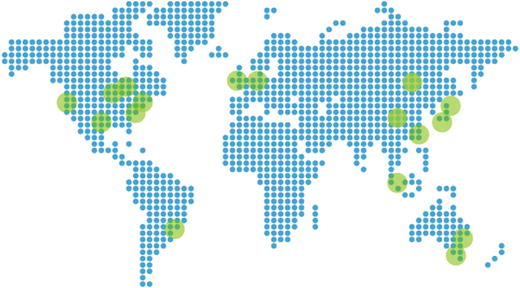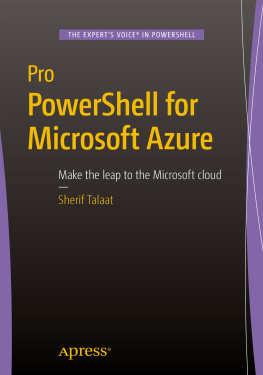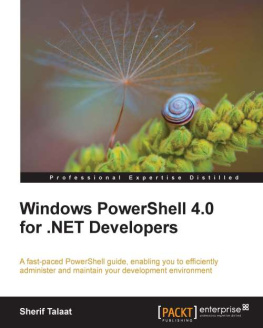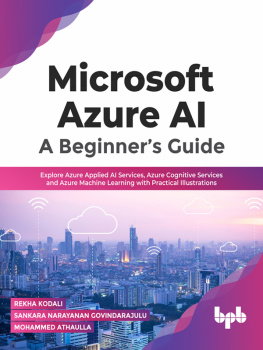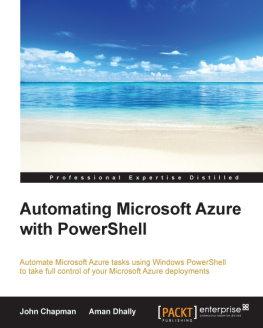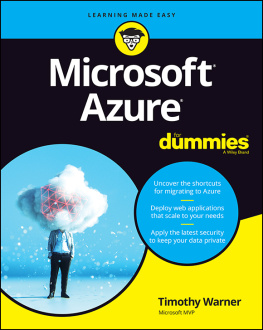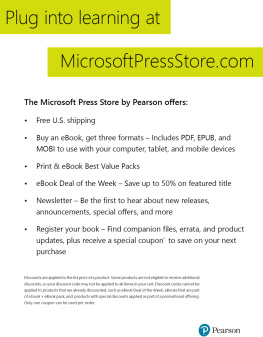1. Azure Architecture Overview
The computer industry is the only industry that is more fashion-driven than womens fashion.
Larry Ellison (Chairman, Oracle Corporation)
The cloud is a popular and trending term that everyone is using nowadays. Of course, the cloud that I mean has nothing to do with the weather, but with technologycloud computing.
Today, almost everyone is using the cloud to describe a service delivered to or consumed by end users and information workers. The cloud is everywhere and it is being consumed by almost everyone on the planetfrom the oldest computer geeks to the youngest tablet and game console users.
People may not even know that they are using a cloud service, but everyone who uses the Internet is using the cloud. If you have an e-mail account, then you are using the cloud. If your kids are playing video games online with their friends, then they are using the cloud. If your spouse is using iCloud, OneDrive, or any similar service to store pictures, videos, and other files, thats through the cloud too. Despite these examples, ironically, there are people still resisting the idea of using the cloud, although they are using it on a daily basis.
The cloud, in fact, is one of the fastest growing technologies in the history of the computer industry. Every day you will find a new vendor delivering a different type of cloud service; and every time you log in to your cloud service portal, you will find a brand-new feature. Therefore, to cope with the massive explosion of features and always be in control (Ill quote tire manufacturer Pirellis slogan: Power is nothing without control), we have to ensure that we are using the right tools in our arsenal to help us achieve this goal.
This book spotlights PowerShell as one of the most powerful tools that you must have in your toolbox. PowerShell is not just a scripting language, but also an automation engine that makes it easy to do a complex task in less time and with minimal effort. Moreover, PowerShell plays a major role as a platform in some of Microsoft Azures features. For example, the Azure automation engine is built on top of PowerShells workflow feature. Dont worryI will cover everything in more detail in the upcoming chapters.
In this chapter, and in the entire book, you will learn about the PowerShell module for Microsoft Azure and how to get it ready. Also, you will learn how to use the PowerShell modules and cmdlets to deploy, configure, manage, and automate Azure services.
What Is Microsoft Azure?
Microsoft Azure (formerly Windows Azure) is Microsofts cloud platformyou could say Microsofts implementation for cloud computingthat provides both Infrastructure as a Service (IaaS) and Platform as a Service (PaaS). Azure is the platform to build, deploy, deliver, and manage robust, secure, and scalable applications and services, not only using Microsofts technologies, but other vendors tools, operating systems, and programming languages as well.
Because it is a hybrid platform, Azure allows you to tightly integrate your on-premises services with cloud-hosted solutions as if they are both in the same datacenter. Also, it is a scalable and economical platform that easily and quickly scales up or down your services and resources when it is neededand without paying a lot of money. You only pay for what you use and consume.
Note
Azure is the only major cloud platform ranked by Gartner as an industry leader for both IaaS and PaaS.
Azure Regions
The Azure platform operates through a global network of Microsoft-managed datacenters in 17 regions (at the moment I am writing these words) around the world, with more datacenters in more regions to come soon. Microsoft has more than 1 million servers hosted in 100-plus datacenters within its cloud infrastructure portfolio. This massive infrastructure delivers 200-plus cloud services to more than 1 billion customers in 90 countries.
Note
For more statistics about Microsofts datacenters, refer to http://download.microsoft.com/download/8/2/9/8297F7C7-AE81-4E99-B1DB-D65A01F7A8EF/Microsoft_Cloud_Infrastructure_Datacenter_and_Network_Fact_Sheet.pdf
The global presence of Azure means a high availability of services (a 99.95% service level agreement (SLA)). It also allows you to build your disaster recovery (DR) sitegeolocation-redundant replicas of your applications and serviceswith ease, low effort and resources, and in a cost-effective manner. Moreover, it will help you deliver world-class service performances with minimal latency by hosting at a location closest to your users base.
Figure ) for the most updated services availability list.
Figure 1-1.
Microsoft Azure regional locations
Table lists the Azure regions and locations, so that you can easily identify the closest one to you and your users.
Table 1-1.
Azure Regions and Locations
Region | Location |
|---|
US Central | Iowa |
US East | Virginia |
US East 2 | Virginia |
US Gov Iowa | Iowa |
US Gov Virginia | Virginia |
US North Central | Illinois |
US South Central | Texas |
US West | California |
Europe North | Ireland |
Europe West | Netherlands |
Asia Pacific East | Hong Kong |
Asia Pacific Southeast | Singapore |
Japan East | Saitama Prefecture |
Japan West | Osaka Prefecture |
Brazil South | Sao Paulo State |
Australia East | New South Wales |
Australia Southeast | Victoria |
In Table you will notice that there are two regions labeled US Gov; these regions are part of Azure Government. Azure Government is the cloud platform designed and built to address the security and compliance needs of the United States government and its solution providers. Also, it is physically isolated from other non-US government datacenters and operated by screened personnel.
Note
The Australia Regions are available only to customers with billing addresses in Australia and New Zealand.
Azure Content Delivery Network (CDN)
In addition to the global network of Microsoft datacenters, Azure has another global network of content delivery network (CDN) nodes. Basically, CDNs are a nodesyou can call them datacenters or serversthat are distributed globally to cache static content (such as images, videos, audios, etc.) to the closest geographical physical location of your end users.
Does it make any difference?! Yes, of course. A CDN is another way to deliver a better performance to your end users. I am pretty sure that you are now comparing CDNs to Azure regions and that you are wondering why you should use a CDN if you already have a service distributed geographically across different regions. I know, its a little bit confusing, but Ill tell you the trick. Lets use Microsofts web site as a real-life example. Microsoft has a dynamic web site that has a lot of files that users can download, including Windows, Office, and other products. There is no doubt that a technology giant like Microsoft has its web site hosted on different locationsand, of course, no need to say it is hosted on Azure.
